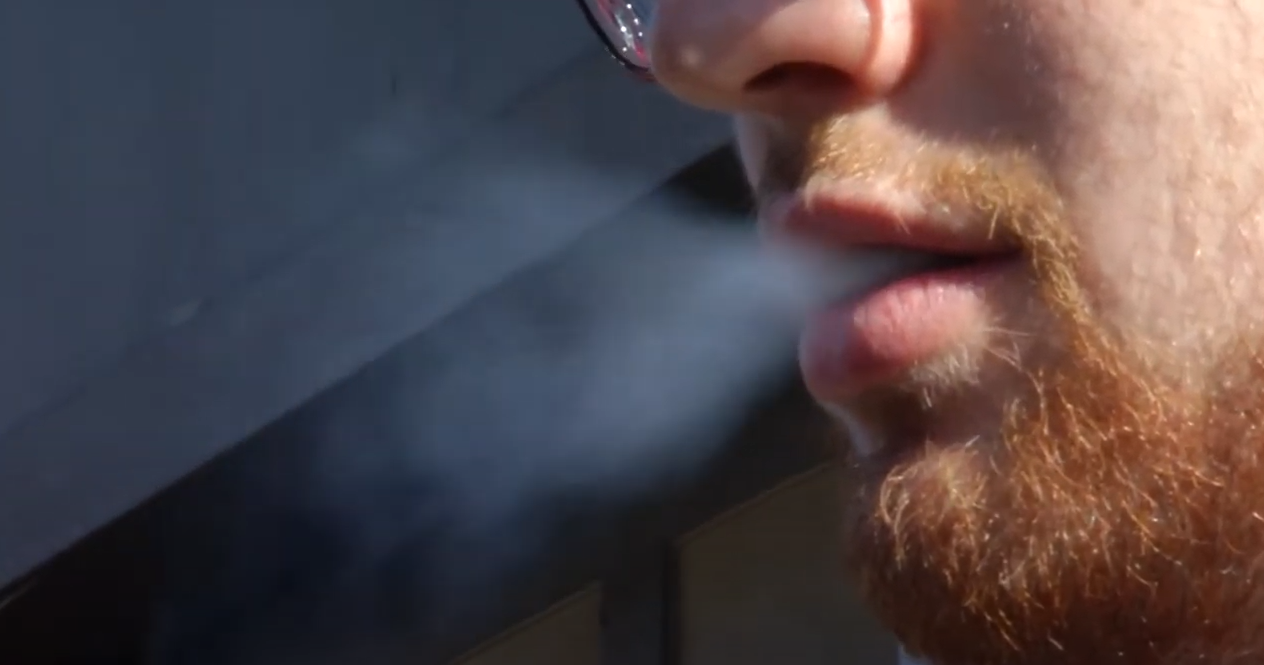“Some just like the flavor and that it’s a ‘cool thing to do’” said Jacelynn Trujillo.
“There [were] a lot of people saying that vaping isn’t as bad as smoking cigarettes.” said Tiara Alvarez.
Whether they’re drawn by the fruity flavors or the claims that they’re less addictive, one thing is for sure. Vaping is the new vice of choice among teenagers. A survey of over 19,000 students last year found 26 percent of high school students and 1 in 10 middle school students are currently using e-cigarettes. It is called vaping because tiny clouds of vapor are produced when using these devices. The liquid comes in flavors, such as mint, fruit and bubble gum. Oftentimes teens and young adults like Tiara Alvarez are unaware that the liquid contains nicotine.
“I started noticing a shortness of breath because that’s when I started exercising more and it was a bit difficult for me to breathe,” Says Tiara Alvarez
Pulmonologist Dr. Fernando Holguin studies the effects of smoking on teens.
“We’ve conducted a fair amount of focus groups doing our own vaping research here in Colorado. Kids think it’s not really a big deal, that it’s just vapor water. Which is a misconception,” said Dr. Holguin.
In a recent study, social scientists surveyed over two thousand 11th and 12th graders’ e-cigarette use—then asked about wheezing or bronchitis symptoms. They found students who vaped were more susceptible to lung inflammation and respiratory symptoms. Experts say it’s logical that vaping could cause COVID to be more severe.
“If the virus enters a lung that is damaged, that the structure has been broken, that is more permeable; the virus will be able to get access in larger numbers. One of the receptors the virus uses to get into the lungs, the ACE2 receptor, increases with smoking. There is a possibility that inflammation produced by vaping could also lead to changes like that and make them more susceptible to developing a severe infection,” explained Dr. Holguin.
The study also found that minority groups were more likely to show symptoms with vaping. This is especially worrisome for the Latino community— they are one of the fastest growing vaping groups in the U.S.
“It may not necessarily mean that kids who are Hispanic are more susceptible, but that they perhaps have other exposures that make them more vulnerable,” said Dr. Holguin.
So how can parents know if their teen is vaping? Here’s some advice from another teen.
“I know a lot of kids will put it all the way in their hand – because now they’re so small they can fit without being recognizable – and they put it in their hand, turn their head and they do a lot of this stuff. A lot of kids put it in their sleeve,” explained Trujillo.
And what do the experts recommend you do if you suspect you child is vaping? Dr. Holguin is also a father of two teens.
“As someone who works in the ICU and was able to experience firsthand kids who were intubated due to respiratory failure because of the vaping lung syndrome we saw, I tell my kids, ‘these things are happening. I see kids who are very young, almost your age, who are going through very serious problems.’ So, I plant that seed in their head about the potential dangers. But then I tell them ‘if you’re vaping or thinking about vaping, talk to me’” shared Dr. Holguin.
To watch local TV news report, see here: https://parentingnews.wpengine.com/news-reports/vaping-teens-and-covid/

